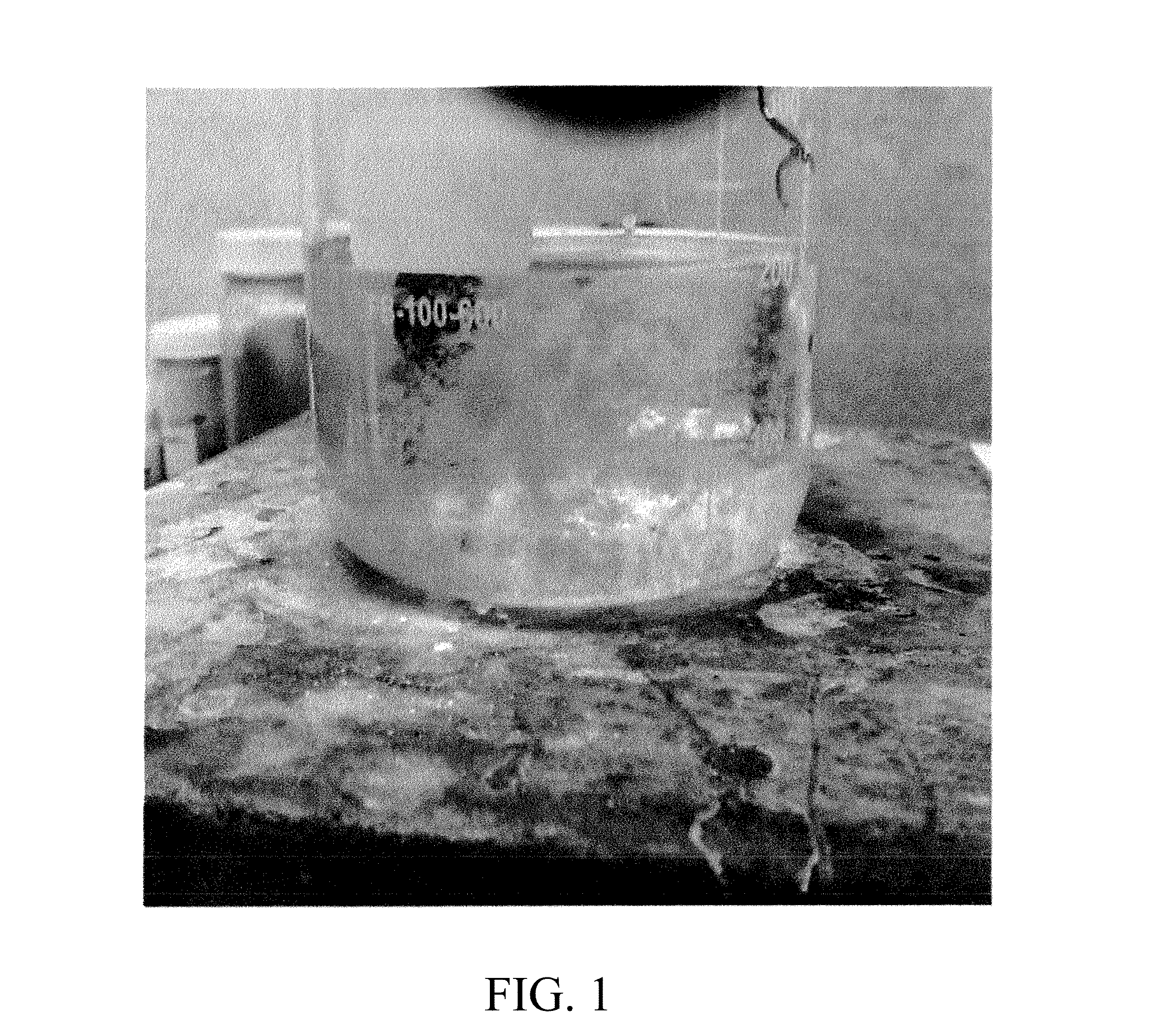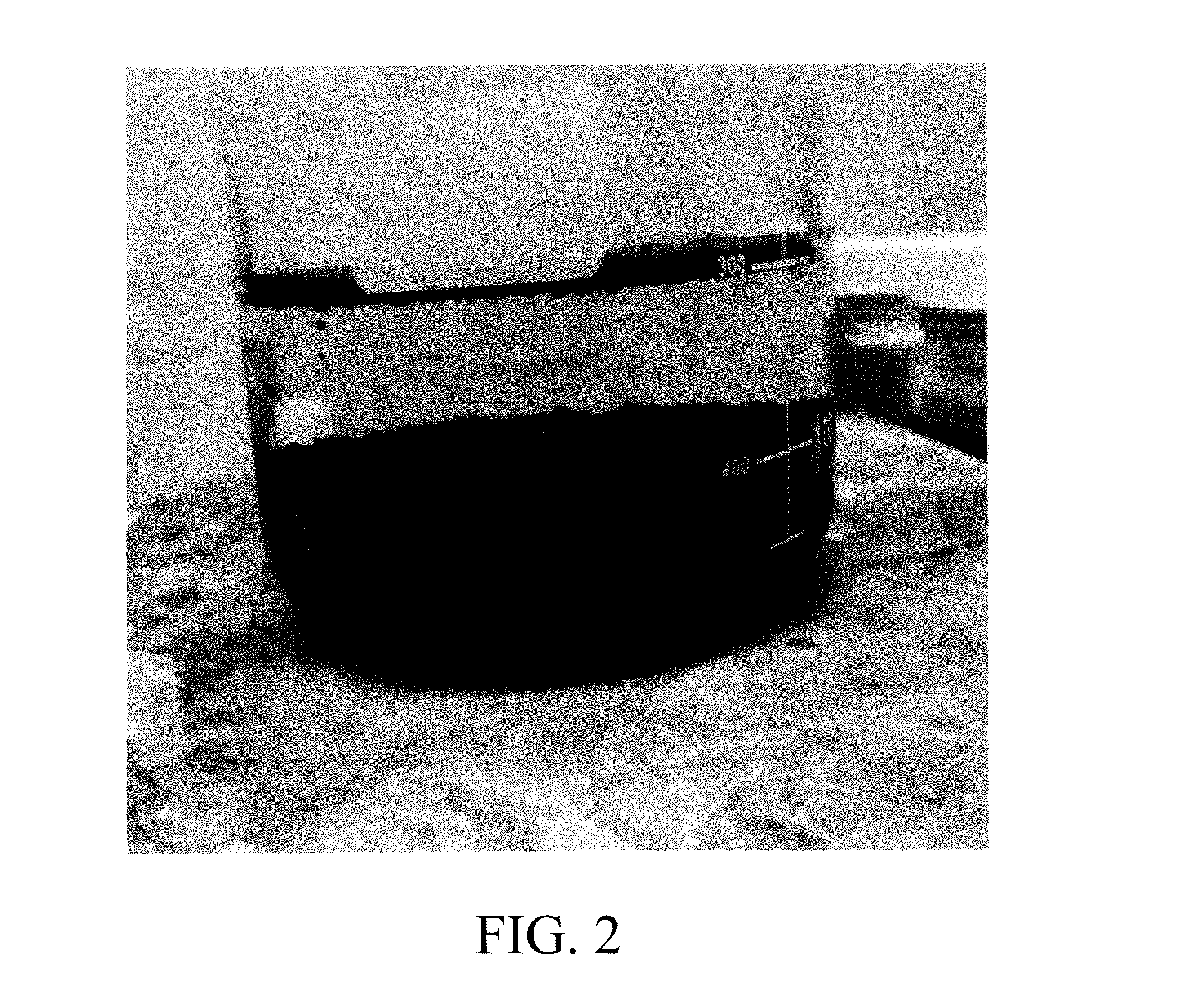Formulations and methods for removing heavy metals from waste solutions containing chelating agents
a technology of chelating agent and heavy metal, which is applied in the direction of quarries' waste water treatment, separation process, treatment water, etc., can solve the problems of ineffective conventional methods for removing heavy metals, high toxicity of waste solutions, and oftentimes corrosive and flammable,
- Summary
- Abstract
- Description
- Claims
- Application Information
AI Technical Summary
Benefits of technology
Problems solved by technology
Method used
Image
Examples
example 1
Chemical Formulation for Removing a Heavy Metal from a Waste Solution Containing a Chelating Agent
[0037]Chemical formulations comprising NaSH flakes were prepared for removing a heavy metal from a waste solution containing a chelating agent. High-purity NaSH flakes were found to yield a stable formulation. Lesser-purity liquid NaSH did not yield a suitably stable formulation. An example of the product data for a sufficiently pure NaSH flake composition is set forth in Table 1.
TABLE 1Product data information for Sodium Hydrosulfide (flake).SpecificationTypicalNaHS* 70%MIN71%Na2S 8%MAX5.5% Iron (Fe)10 ppmMAX5.4% Insoluble in H2O (%)0.20%0.02% Particle Sizeon mesh 460%on mesh 1895%on mesh 10099%Bulk Density (g / cc)0.6-0.7*Includes Na2S calculated as NaHS-Hydrated-Not less than 25% water of crystallization
[0038]Examples of chemical formulations that were prepared for removing a heavy metal from a waste solution containing a chelating agent are those in Table 2. The formulations were p...
example 2
Removing a Heavy Metal from a Wastewater Generated During the Manufacture of Medical Equipment
[0040]A method was performed to remove heavy metals from wastewater generated from the manufacturing of medical equipment, prior to discharging the wastewater to a local municipality for further treatment. The wastewater from the medical equipment manufacturing process contained molybdenum, cadmium, chromium, copper, lead, nickel, zinc and silver. The wastewater was adjusted to pH of about 7. A chemical formulation (e.g., formulations 1-5; see Table 2) was added to the wastewater until an oxidation reduction potential was obtained of between around −300 mV and about −450 mV, at a pH of from about 7 to 9. Then, the treated wastewater was processed through an inclined plate clarifier for solid / liquid separation.
[0041]The method showed a reduction of heavy metals in the wastewater to acceptable levels placed upon the manufacturing facilities by the municipality: metal discharge limits of molyb...
example 3
Removing a Heavy Metal from a Wastewater Generated During the Manufacture of a Dietary Supplement
[0044]A method was performed to remove heavy metals from wastewater generated from manufacturing of dietary food supplements (e.g., vitamin or other dietary supplements). The wastewater contained high levels of zinc (approaching 1,000 mg / L) and chrome (greater than 5,000 mg / L), as well as high concentrations of citrates, gluconates, and ammonium chelating agents (generally at levels greater than 500 mg / L). The wastewater was adjusted to a pH of about 7. A chemical formulation including sodium aluminate (e.g., formulations 1, 2, 4, and 5; see Table 2) was added to the wastewater to an oxidation reduction potential of between around −300 mV and about −450 mV, at a pH of from about 7 to 9. Formulation 5 was used in particular trials. Once the target ORP was achieved, anionic polymer was added. Then, the treated wastewater was processed through a plate and frame press for solid / liquid separa...
PUM
| Property | Measurement | Unit |
|---|---|---|
| Fraction | aaaaa | aaaaa |
| Fraction | aaaaa | aaaaa |
| Fraction | aaaaa | aaaaa |
Abstract
Description
Claims
Application Information
 Login to View More
Login to View More - R&D
- Intellectual Property
- Life Sciences
- Materials
- Tech Scout
- Unparalleled Data Quality
- Higher Quality Content
- 60% Fewer Hallucinations
Browse by: Latest US Patents, China's latest patents, Technical Efficacy Thesaurus, Application Domain, Technology Topic, Popular Technical Reports.
© 2025 PatSnap. All rights reserved.Legal|Privacy policy|Modern Slavery Act Transparency Statement|Sitemap|About US| Contact US: help@patsnap.com



